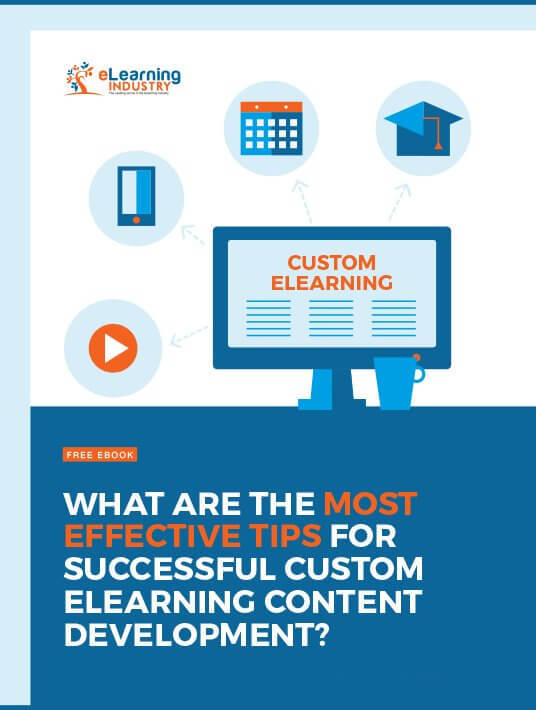A good customized eLearning course goes a long way in meeting the learners' needs. It helps close gaps in their knowledge and skills, enhancing performance levels. Here are five proven tips to develop content for bespoke online courses.
1. Get A Clear Idea Of The Learning Outcomes
Clarity on the learning outcomes helps you create the right online course that meets the needs of stakeholders. Conduct a kick-off meeting with the stakeholders to know why they need the course and how they expect it to help their employees.
For instance, if they need an eLearning course to educate their manufacturing staff on the importance of Good Manufacturing Practices (GMPs), you need to include content that demonstrates how GMPs add value to the business and propels employees to adhere to them.
On the other hand, if the course is aimed at improving customer-handling skills of the sales people, the content must be designed with the intention of enhancing performance by changing learner behaviors.
2. Understand Your Learners To Tailor The Online Course To Their Needs
Understanding learners and what they are expected to know and do after the course will help you choose the right content and Instructional Design strategy for the course. It also helps you stay focused on the goal of the course, while taking into consideration any limitations you might have to overcome, such as designing courses for sales people who are constantly on the move or training shop floor workforce with little computer knowledge.
You can get a clear idea of your learners’ needs by asking the following questions:
- Who is the course for?
- What do they want or expect to get out of the course?
- How will they use the information and skills they learn in their jobs?
- What do they know about the topic? Do they need to be taught the basics or advanced concepts?
- Are they white collared or blue-collared employees?
- What is their work experience? Are they novices, mid-level employees, or seasoned staff members?
- What is their comfort level with computers?
- Is the training under consideration compulsory or voluntary?
- What prerequisites do they need?
- In what settings will they use this training?
- Are they native speakers of English or is English their second language?
3. Frame Proper Learning Objectives
This is inarguably the most important aspect in the development of bespoke eLearning content. Prof. Benjamin Bloom, an American psychologist, proposed six levels of learning, later revised by Dr. Lorin Anderson, viz. remembering, understanding, applying, analyzing, evaluating, and creating. Here is a brief overview of what learners are expected to do at each level.
| Level |
What learners are expected to do |
| Remembering |
Recall and recognize the information presented to them |
| Understanding |
Comprehend the information and state it in their own words |
| Applying |
Use the information presented in the training program in their jobs |
| Analyzing |
Analyze the information acquired through the training program |
| Evaluating |
Evaluate the information acquired to make decisions to solve problems |
| Creating |
Use the information to put together diverse elements to create a “new whole” |
A learning objective needs to “match” the corresponding level of cognition. For instance, if your online course enables your learners to recall the guidelines to use social media, you then need to write its learning objectives based on the corresponding level of cognition i.e., remembering.
4. Build Assessments To Measure The Achievement Of Learning Objectives
Develop assessments that help measure the achievement of the learning objective. You can use the following matrix to assess learners at each of the six levels of learning.
| Level |
How you can assess |
| Remembering |
Fill in the blanks, multiple-choice questions (MCQs), and diagrams that need to be labeled |
| Understanding |
Questions that require learners to summarize the information acquired and assignments that involve classification of cases, elements, events, etc. |
| Applying |
Simulations of tasks and problem-based elements such as scenarios where learners need to provide the right response. |
| Analyzing |
Case studies where learners are required to determine how various elements of a business function or interact. |
| Evaluating |
Scenarios and case studies where learners are required to judge or critique decisions and actions. |
| Creating |
Business games and what-if scenarios where learners need to formulate a new solution to business needs/challenges. |
5. Evolve The Right Content Presentation Strategy
Here are a few best practices of presenting learning content.
- Collect all required materials from Subject Matter Experts, and check for gaps. If you find any, seek additional information from the SMEs to bridge the gaps. This will ensure content "flows" smoothly.
- Take time to chunk the content gathered from the SMEs. Content chunking helps weed out information unnecessary to the achievement of learning objectives.
- Choose an appropriate Instructional Design strategy based on the training requirement. For instance, you can go for scenario-based learning for compliance training, while guided learning is ideal for training new hires. Likewise, you can go for a simulation-based Instructional Design strategy to train people on software applications.
- See that you use the right learning interactivities to present learning content.
| Interactivity |
When you need to use |
| Click-on-images |
Distinguish points visually |
| Hotspots and Rollovers |
Describe individual elements of a system |
| Click-on-tabs |
Explain related elements |
| Timeline |
Convey information about events that took place over a period of time |
| Click-on-numbers |
Explain specific elements in a concept |
| Slideshow |
Describe the steps of a process |
| Flip cards |
Display the key terms related to a concept |
- Use Scaled Vector Graphics, SVGs, as they are rendered effectively on all devices.
- Go for images of humanoids to depict people as they are not associated with a specific culture.
- Utilize animated videos to explain the functioning of complex products such as a jet engine.
- Ensure the tone of audio narration is conversational.
A good custom-built eLearning course helps close learning gaps effectively, thereby enabling your staff perform better. By following the tips mentioned above, you can develop the winning content for your online course.



